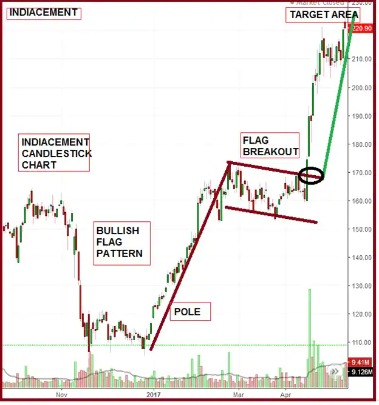
To explore how the dragonfly doji can be used in practice, consider a hypothetical trading scenario of a currency pair like EUR/USD that is engaged in a sustained downtrend. This market action reflects the unyielding presence and dominance of bears in the forex market. The tug-of-war between bulls and bears that underlies the psychology of the dragonfly doji lays the groundwork for potential trend shifts in either direction. This candlestick’s presence is most significant when it appears after a downtrend, preceded by bearish candlesticks. A Dragonfly Doji is a type of single Japanese candlestick pattern formed when the high, open, and close prices are the same. The body can either be filled (negative candlestick) or hollow (positive candlestick).
Price reversal is only to the extent that it makes it in time for the daily opening value. One reason is that the investors were neutral, with a low-level of confidence about expecting upward momentum. The extreme top of the dragonfly doji marks the open and close points. An important identification of the dragonfly doji is its long lower shadow. The long lower shadow shows where the demand prevails in the market. However, as the candle played out, bulls started to buy-back the asset quite heavily (Refer to Image 2).
- Whilst this doji is most often used as a bullish reversal trade setup, it is crucial to know when and where to play them.
- When entering into long positions on a bullish Dragonfly Doji reversal, stop-loss orders are placed under the price low of the pattern.
- The doji is also an indicator of long-term trends, and it can be trusted to indicate which direction a market will take for a long period.
In technical analysis, doji candlestick patterns are considered bullish reversal patterns. This means that the doji reversal candlestick pattern indicates the potential reversal of a price downtrend and the start of an uptrend. In technical analysis, dragonfly doji candlesticks are used as a technical indicator that signals a potential reversal of an asset’s price trend. They suggest that the direction of a movement may be nearing a central turning point.
What Is a Dragonfly Doji? – Bullish Doji Candlestick
Traders should watch for these signs before entering any trades to ensure they understand market sentiment and can make informed decisions about their investments. This easily recognizable candlestick holds the promise of discerning periods of indecisive market sentiment and predicting potential trend reversals with a respectable degree of accuracy. Doji patterns indicate a transition in prices or that the market is undecided about the direction prices will take.
- The best strategy to trade it and examples of how they have played out in the past.
- The lower shadow of a dragonfly doji can act as an area of support for future prices.
- Key takeaways A morning star pattern is a bullish 3-bar reversal candlestick patternIt starts with a tall red candle,…
- Even beginner candlestick chart analysis software like candlestick chart analysis by hand will help you better attract a graph by hand.
Thus, you are advised to keep a close eye on the next candlestick in the chart and objectively understand the market movement before guessing anything in this confusing trend. A doji is most significant when it is close to an area of resistance or support, or in an overbought or oversold market. Besides, a single doji has more significance when compared to multiple dojis in a trend line.
Dragonfly Doji: Understanding This Pattern
Confirmation is necessary before opening a trade, and traders should put a tight stop loss. In conclusion, the dragonfly doji candlestick pattern is a reliable reversal pattern that both beginners and experts can use in trading. A dragonfly doji candlestick pattern is a bullish doji candlestick that signals a potential reversal in price after a downtrend. The design appears when the price of a security fluctuates in a downtrend and then reverses direction, forming a long body surrounded by a lower shadow. This pattern can be seen in various financial markets such as stocks, indexes, or commodities.

These products may not be suitable for everyone, and it is crucial that you fully comprehend the risks involved. Prior to making any decisions, carefully assess your financial situation and determine whether you can afford the potential risk of losing your money. We introduce people to the world of trading currencies, both fiat and crypto, through our non-drowsy educational content and tools.
What Does a Dragonfly Doji Candlestick Tell?
The possibility of an upward breakout is very high due to the position of the open and close price. The Doji patterns do not provide enough information as a trader would like to have to make a decision. Keep in mind to always consider other patterns and indicators along with Dragonfly Doji pattern. Traders shoud follow their trading plan and risk management at all time.
A long lower shadow suggests aggressive selling during the candle period, but buyers could absorb the sale and push the price back up since the price closed near the open. The long lower tail of a dragonfly doji indicates that large amounts of selling have flooded the market, which caused downward pressure on the security price during a certain period. However, at the end of that period, the close price is still able to stay at the level of the open price.
Bears Rejected by Bulls
A single Doji is usually a good indication of indecision however, two Dojis (one after the other), presents an even greater indication that often results in a strong breakout. The Double Doji strategy looks to take advantage of the strong directional move that unfolds after the period of indecision. Pending orders refer to those that direct a broker to buy or sell an asset at a certain price.
When Does A Dragonfly Doji Show Up? – Lawyer Monthly Magazine
When Does A Dragonfly Doji Show Up?.
Posted: Mon, 20 Jun 2022 07:00:00 GMT [source]
The signal is confirmed if the candle following the dragonfly rises, closing above the close of the dragonfly. The stronger the rally on the day following the bullish dragonfly, the more reliable the reversal is. The candle following a potentially bearish dragonfly needs to confirm the reversal. The candle following must drop and close below the close of the dragonfly candle. If the price rises on the confirmation candle, the reversal signal is invalidated as the price could continue rising. In effect, the dragonfly doji may not act as a reversal or a continuation candlestick.
However, Doji opens and closes at the same price, while a hammer opens lower and closes under the opening price. If the upper shadow is longer than the lower one, it suggests that buyers attempted to push prices higher but were unsuccessful as sellers overwhelmed them and drove prices back down. Conversely, if the lower shadow is longer than the upper one, it implies that sellers attempted to go costs down only to be met with buying pressure that pushed prices back up.
Because this is a one candlestick pattern and it is signalling indecision it will not always work. The other crucial part to this candlestick pattern https://g-markets.net/ is the confirmation. This presentation discusses technical analysis, other approaches, including fundamental analysis, may offer very different views.
Is this pattern or a sign of a Bull or Bear Market?
But most of the time, a trend reversal is a common stock market prediction with a bullish dominance. Doji’s with strong Bullish or Bearish implications, like the dragonfly doji, often make for good reversal candles. However, this is only true when found under the right candlestick patterns (context).

